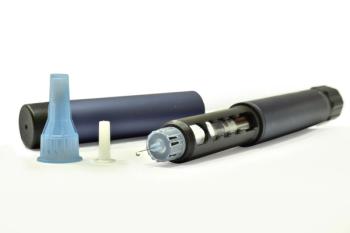
Arkansas R.Ph.s help move patients from Rx to OTC drug
Picture this scenario: A state employee health plan switches patients from an Rx to an over-the-counter (OTC) drug. Pharmacists help expedite the switch without taking a hit to their pharmacy's bottom line. An unimaginable concept, right?
Picture this scenario: A state employee health plan switches patients from an Rx to an over-the-counter (OTC) drug. Pharmacists help expedite the switch without taking a hit to their pharmacy's bottom line. An unimaginable concept, right?
Wrong.
This scenario recently played out in Arkansas, where pharmacists helped move members of the Arkansas State Employees Benefit Division (EBD) from prescription proton pump inhibitors (PPIs) to Prilosec OTC.
After it was decided that 42-count Prilosec OTC was the most cost-effective alternative to Rx Nexium, Rx omeprazole, and Rx Protonix, it was determined that the average gross margin for these Rx PPIs was approximately $13.
So why would a pharmacist want to switch patients from a drug that provides a gross margin of about $13 to an OTC for which the gross margin is about $3.50?
Enter Walt Morrison, former associate dean of UAMS college of pharmacy, who served as a PBM consultant to the university on this program. Morrison's task was to make sure there was no disincentive for pharmacists to assist in the transition. Pharmacists were told that if they called physicians to have the employees' prescription switched to Prilosec OTC, they would receive a $13 dispensing fee per prescription.
"Pharmacists stood to lose three months of dispensing fees and sales opportunities, since patients would have to visit the pharmacy only nine times a year for a 42-day supply of Prilosec instead of 12 times a year for a 30-day supply of a prescription PPI," said Johnson. Johnson credited the Arkansas Pharmacists Association for sending e-mail and fax messages to pharmacists, telling them that a $13 dispensing fee would be provided for each omeprazole OTC they dispensed.
Morrison said that an incentive for patients was created in the form of a fifth OTC tier with a $5 co-pay per prescription. The copayment for a generic is $10 and the co-pay for an Rx PPI is $50. Although Morrison acknowledged that pharmacists did wind up losing the equivalent of two plus prescriptions a year, amounting to about $26-$39, "they didn't have to provide that dispensing service for those two plus Rxs either," he added. "From the pharmacists' point of view, they didn't lose money because the 42-count was available and they dispensed fewer Rxs. Patients got a 42-day supply instead of a 30-day supply, the pharmacy got $13 instead of $3.50. The plan won, the patients won, and the pharmacists won."
Morrison went on to say, "We came on board in January 2004. In the first two weeks, patients could still get any drug they wanted, but Prilosec OTC received about a 40% share of the market. In four months the market share moved up to 60%. It was anticipated that the program would net $3.9 million during the first year and that the OTC would get 80% to 90% of the market by the end of the first year."
Despite the rapid success of the program, Morrison noted that there was an unexpected shortage of Prilosec OTC by July 2004. "Basically it was very difficult, if not impossible, to come by. We brought generic omeprazole back from the third tier of coverage so that patients could get their medication." Although the shortage has recently improved, Morrison acknowledged that "there are still a few gaps in availability."
In a separate but related development, the Pentagon announced that this summer it is dropping coverage for Nexium. The move is expected to save the Pentagon several million dollars a year. It is reportedly the first time the Defense Department has decided to drop coverage of a licensed medication for financial reasons.
Newsletter
Pharmacy practice is always changing. Stay ahead of the curve with the Drug Topics newsletter and get the latest drug information, industry trends, and patient care tips.





















































































































































